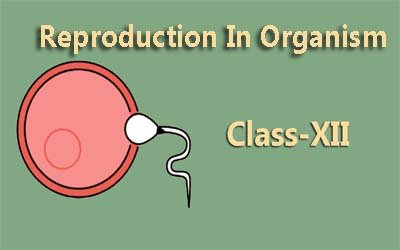Neutral Control And Co-ordination - Class 18
The title you provided, "Neutral Control And Co-ordination - Class 18," likely contains a typo. In recent NCERT Biology curriculums, class 18 covers "Neural Control and Coordination." This topic delves into the fascinating world of how your nervous system acts as the master control center, coordinating and regulating all bodily functions. Here's a quick breakdown of what you'll learn: The Mighty Nervous System: Uncover the structure and function of the nervous system, including neurons (nerve cells) that transmit information throughout the body. The Power of Neurons: Explore how neurons communicate with each other using electrical signals and chemical messengers (neurotransmitters). Maintaining Balance: Learn how the nervous system works to maintain homeostasis (internal balance) by regulating processes like body temperature, heart rate, and blood pressure. Voluntary vs. Involuntary Actions: Understand the difference between voluntary actions (conscious control) and involuntary actions (automatic responses) coordinated by the nervous system. Reflexes: Quick Reactions: Discover how reflexes, like pulling your hand away from a hot object, are rapid, involuntary responses coordinated by the nervous system. The Sensory World: Explore how sensory organs (eyes, ears, nose, tongue, skin) detect stimuli from the environment and send signals to the brain for processing. Brain Power: Learn about the different parts of the brain and their roles in functions like movement, sensation, memory, and thinking. আপনি যে শিরোনামটি দিয়েছেন, "নিরপেক্ষ নিয়ন্ত্রণ ও সমন্বয়-ক্লাস 18", সম্ভবত একটি টাইপো রয়েছে। সাম্প্রতিক এন. সি. ই. আর. টি জীববিজ্ঞান পাঠ্যক্রমগুলিতে, 18 তম শ্রেণীতে "স্নায়বিক নিয়ন্ত্রণ এবং সমন্বয়" অন্তর্ভুক্ত রয়েছে। এই বিষয়টি আপনার স্নায়ুতন্ত্র কীভাবে প্রধান নিয়ন্ত্রণ কেন্দ্র হিসাবে কাজ করে, সমস্ত শারীরিক ক্রিয়াকলাপকে সমন্বয় ও নিয়ন্ত্রণ করে তার আকর্ষণীয় জগতে প্রবেশ করে। আপনি যা শিখবেন তার একটি দ্রুত বিবরণ এখানে দেওয়া হলঃ শক্তিশালী স্নায়ুতন্ত্রঃ স্নায়ুতন্ত্রের কাঠামো এবং কার্যকারিতা আবিষ্কার করুন, যার মধ্যে নিউরন (স্নায়ু কোষ) রয়েছে যা সারা শরীর জুড়ে তথ্য প্রেরণ করে। নিউরনগুলির শক্তিঃ বৈদ্যুতিক সংকেত এবং রাসায়নিক বার্তাবাহক ব্যবহার করে নিউরনগুলি কীভাবে একে অপরের সাথে যোগাযোগ করে তা অন্বেষণ করুন (neurotransmitters). ভারসাম্য বজায় রাখাঃ শরীরের তাপমাত্রা, হৃদস্পন্দন এবং রক্তচাপের মতো প্রক্রিয়াগুলি নিয়ন্ত্রণ করে স্নায়ুতন্ত্র কীভাবে হোমিওস্ট্যাসিস (অভ্যন্তরীণ ভারসাম্য) বজায় রাখতে কাজ করে তা শিখুন। স্বেচ্ছাসেবী বনাম। অনিচ্ছাকৃত ক্রিয়াঃ স্নায়ুতন্ত্র দ্বারা সমন্বিত স্বেচ্ছাসেবী ক্রিয়া (সচেতন নিয়ন্ত্রণ) এবং অনিচ্ছাকৃত ক্রিয়া (স্বয়ংক্রিয় প্রতিক্রিয়া) এর মধ্যে পার্থক্য বুঝুন। প্রতিচ্ছবিঃ দ্রুত প্রতিক্রিয়াঃ আবিষ্কার করুন কিভাবে রিফ্লেক্স, যেমন একটি গরম বস্তু থেকে আপনার হাত দূরে টানতে, স্নায়ুতন্ত্র দ্বারা সমন্বিত দ্রুত, অনিচ্ছাকৃত প্রতিক্রিয়া। সংবেদনশীল বিশ্বঃ সংবেদনশীল অঙ্গগুলি (চোখ, কান, নাক, জিহ্বা, ত্বক) কীভাবে পরিবেশ থেকে উদ্দীপনা সনাক্ত করে এবং প্রক্রিয়াকরণের জন্য মস্তিষ্কে সংকেত প্রেরণ করে তা অন্বেষণ করুন। মস্তিষ্কের শক্তিঃ মস্তিষ্কের বিভিন্ন অংশ এবং চলাচল, সংবেদনশীলতা, স্মৃতি এবং চিন্তাভাবনার মতো ক্রিয়াকলাপে তাদের ভূমিকা সম্পর্কে জানুন।
English
Last updated
Wed, 27-Nov-2024



















